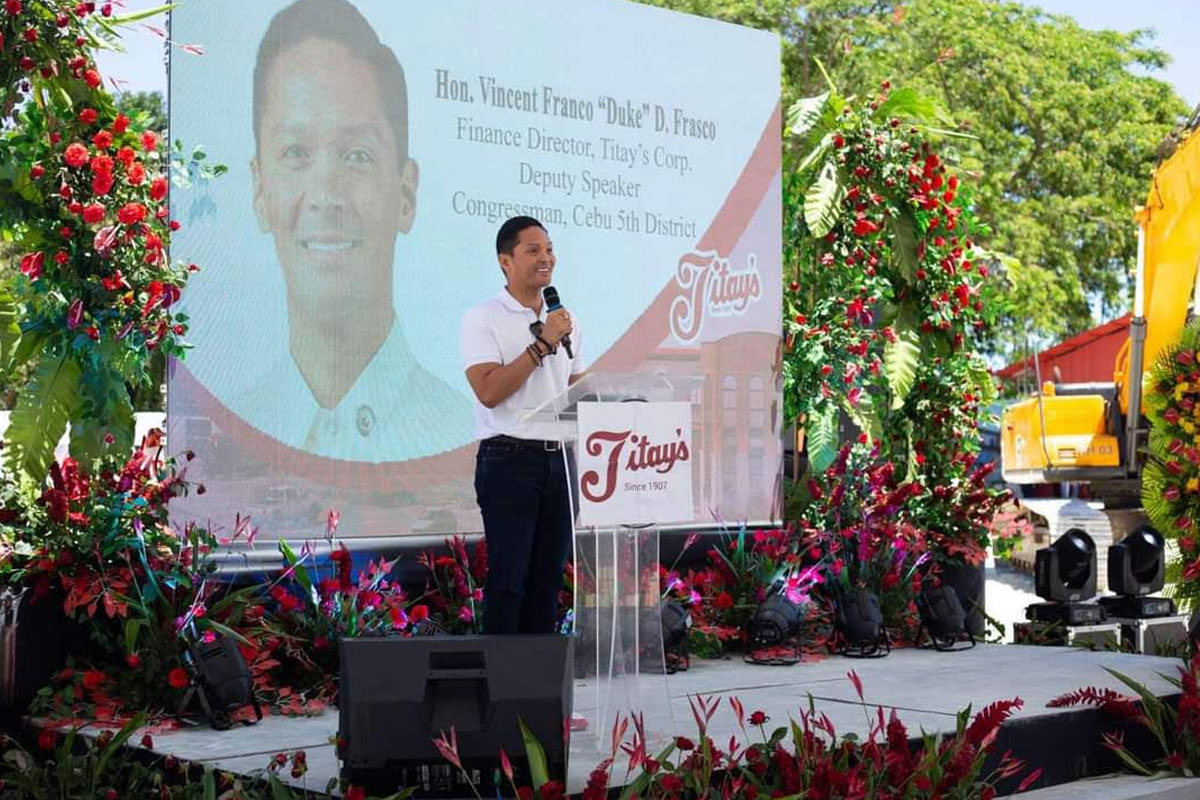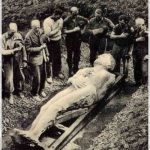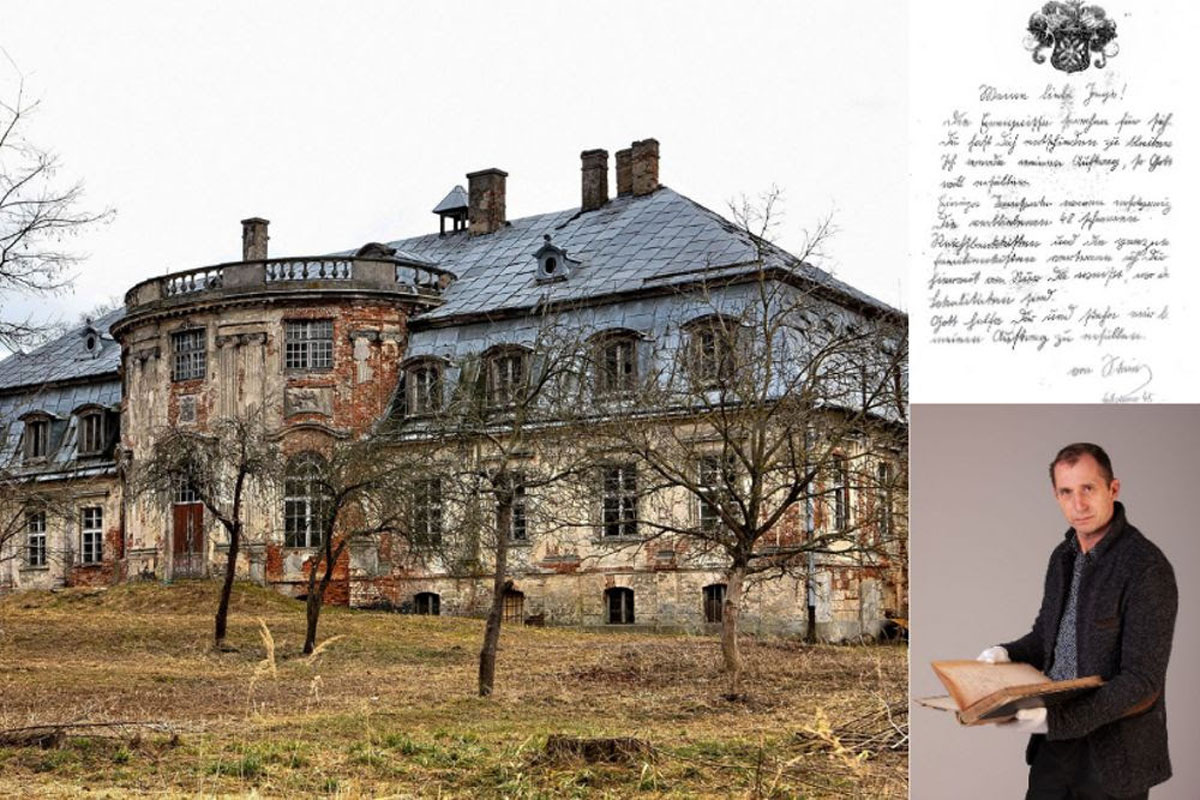
Treasure hunters to start digging for 10 tonnes of Nazi gold in 18th century palace after secret letter to SS lover reveals hidden location
Stuart Dowell April 28, 2021
 Digging for the 48 crates of gold that belonged to the Reichsbank and other valuables will get under way next week in the grounds of the palace used by the SS during the war as a ‘rest and relaxation’ centre. mariusz przygoda/silesian bridge
Digging for the 48 crates of gold that belonged to the Reichsbank and other valuables will get under way next week in the grounds of the palace used by the SS during the war as a ‘rest and relaxation’ centre. mariusz przygoda/silesian bridge
Treasure hunters say they have located 10 tonnes of Nazi gold worth nearly half a billion pounds that was stolen by SS chief Heinrich Himmler at the end of WWII in order to establish a Fourth Reich.
Digging for 48 crates of gold that belonged to the Reichsbank and other valuables will get under way next week in the grounds of a palace used by the SS during the war as a rest and relaxation centre.
Located in what is now the Polish village of Minkowskie just over 50 kilometres east of Wrocław, the treasure hunters say they found the loot using secret documents and a treasure map that it received from the descendants of Waffen SS officers belonging to a secretive lodge that dates back over 1,000 years.
Among the documents is a letter from a senior SS officer to one of the girls who worked at the palace and who later became his regular lover.
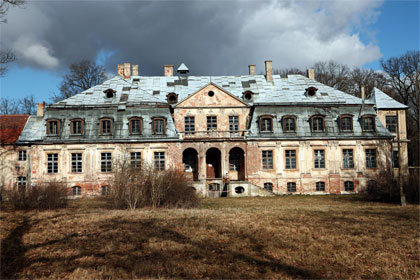 mariusz przygoda/silesian bridge
mariusz przygoda/silesian bridge
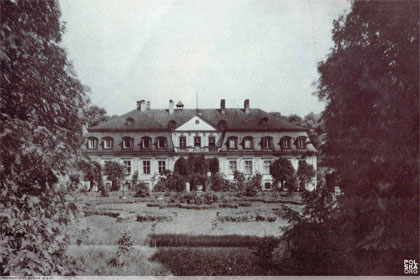 Located in what is now the Polish village of Minkowskie just over 50 kilometres east of Wrocław, the treasure hunters say they found the loot using secret documents and a treasure map that it received from the descendants of Waffen SS officers belonging to a secretive lodge that dates back over 1,000 years.Silesian Bridge Foundation/Polska-org.pl
Located in what is now the Polish village of Minkowskie just over 50 kilometres east of Wrocław, the treasure hunters say they found the loot using secret documents and a treasure map that it received from the descendants of Waffen SS officers belonging to a secretive lodge that dates back over 1,000 years.Silesian Bridge Foundation/Polska-org.pl
In the letter, the officer, called von Stein, writes to the woman named Inge: “The remaining 48 heavy Reichsbank’s chests and all the family chests I hereby entrust to you. Only you know where they are located.”
The cache of documents also includes a war diary written by a high-ranking SS officer using the pseudonym Michaelis which is said to identify the location of 11 sites in the Lower Silesia and Opole regions with caches of gold, stolen art, bank deposits, valuables and religious artefacts.
The diary entry of 12 March 1945 referring to the treasure in Minkowskie says: “A trough has been dug in the orangery, which is a safe “home” for the delivered chests and containers.”
It continues: “48 chests from the Reichsbank, in good condition, were hidden, very well covered with earth and “greened” with still living plants. Let providence watch over us.”
 Among the documents is a letter from a senior SS officer to one of the girls who worked at the palace and who later became his regular lover.Silesian Bridge Foundation
Among the documents is a letter from a senior SS officer to one of the girls who worked at the palace and who later became his regular lover.Silesian Bridge Foundation
Roman Furmaniak, head of the Silesian Bridge foundation which is leading the hunt said that the operation to hide the gold was planned and carried out by diary author Michaelis and Professor Grundman, the Nazis’ heritage conservator in Lower Silesia who had previously prepared 80 hiding places for German gold and valuables for Hitler.
At the end of the war, Grundmann selected the eleven best hiding places for Himmler’s secret operation.
Furmaniak said: “Several people took part in hiding the deposits in Minkowskie. One of them was an officer called von Stein. He used to stay in the palace because he had a lover there. Due to its location it was often visited by high-ranking SS officers. They treated it like a brothel.”
At the palace, the burial of the treasure was supervised by von Stein who, Furmaniak says, was an unusually cruel man who enjoyed making his victims suffer before killing them.
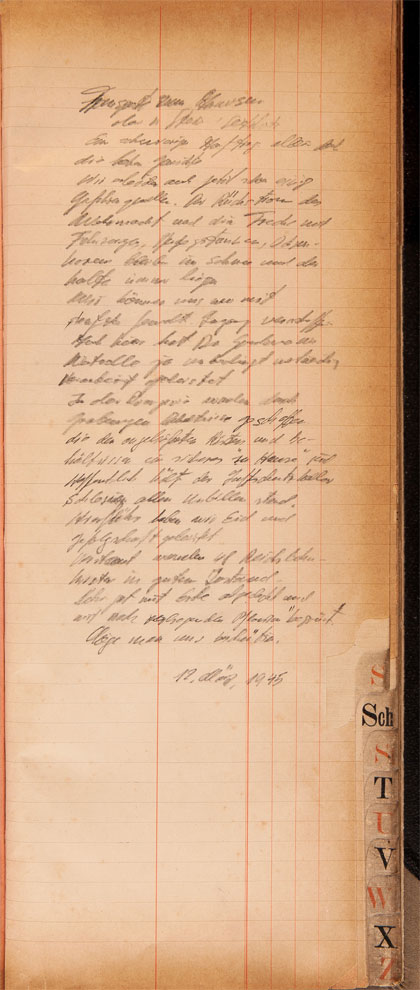 A diary entry from 12 March 1945 says: “A trough has been dug in the orangery, which is a safe “home” for the delivered chests and containers. 48 chests from the Reichsbank, in good condition, were hidden, very well covered with earth and “greened” with still living plants. Let providence watch over us.” Silesian Bridge Foundation
A diary entry from 12 March 1945 says: “A trough has been dug in the orangery, which is a safe “home” for the delivered chests and containers. 48 chests from the Reichsbank, in good condition, were hidden, very well covered with earth and “greened” with still living plants. Let providence watch over us.” Silesian Bridge Foundation
His lover Inge was appointed by von Stein to keep an eye on the hiding place.
Furmaniak said: “She was in love with the handsome officer in a black SS uniform. They were like gods.
“She believed that she would have to stay there for a year, maybe two, then it would all be over. Nobody believed then that that region would come under the control of the Soviet Union. It was before Yalta. Even after Yalta, that information was not generally known.”
He added that he is convinced that the treasure remains untouched because Inge stayed in the area and checked on the hiding place for 60 years until she died.
 Roman Furmaniak, head of the Silesian Bridge foundation which is leading the hunt, with the SS diary.Silesian Bridge Foundation
Roman Furmaniak, head of the Silesian Bridge foundation which is leading the hunt, with the SS diary.Silesian Bridge Foundation
He said: “There was a two-month period in 1945 when she had to hide in the forest from the Russian. But when she got back, the area had not been disturbed. If they had dug a hole, they would have taken what they wanted and then left the hole. We have seen this in history many times in Poland.”
Following border changes at the end of the war, the German population was expelled under the new Communist leadership and Poles living in what is now Western Ukraine were sent to populate the region.
To fit in, Inge had to change her appearance and identity to blend in with the new Polish population and eventually married a local man.
The palace in Minkowskie dates back to the 18th century when it was built by a Prussian general Fryderyka Wilhelma von Seydlitz in the Rococo style.
 Polska-org.pl
Polska-org.pl
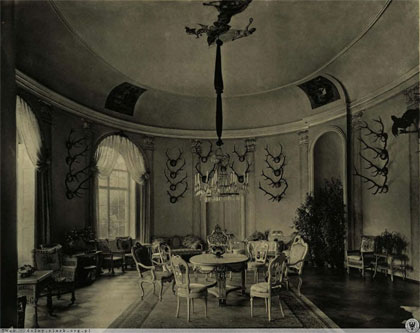 The palace in Minkowskie dates back to the 18th century when it was built by a Prussian general Fryderyka Wilhelma von Seydlitz in the Rococo style.Polska-org.pl
The palace in Minkowskie dates back to the 18th century when it was built by a Prussian general Fryderyka Wilhelma von Seydlitz in the Rococo style.Polska-org.pl
Over the years it changed hands several times, being used by the Red Army, the Polish army, a local council office, kindergarten and even a cinema.
Now in private hands, the Silesian Bridge foundation has taken a long-term lease on the property.
Last year, Silesian Bridge released the location of one of the eleven hiding places, a palace in the village of Roztoka.
Furmaniak said: “The diary says that the deposits in Roztoka are buried 64 metres at the bottom of a well. It would be a huge task to excavate that site. We are focusing on Minkowskie now because we think it will be easier.”
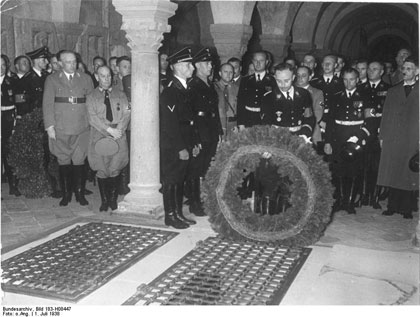 SS chief Heinrich Himmler, pictured in 1938 at the grave of King Henry the Fowler, believed he was the reincarnation of the king.Bundesarchiv, Bild 183-H08447 / CC-BY-SA 3.0
SS chief Heinrich Himmler, pictured in 1938 at the grave of King Henry the Fowler, believed he was the reincarnation of the king.Bundesarchiv, Bild 183-H08447 / CC-BY-SA 3.0
Silesian Bridge says that the cache in Minkowskie is the famous Gold of Breslau, which went missing from the Police Headquarters at the end of the war in Breslau, now the Polish city of Wrocław.
What happened to the missing gold is one of the biggest mysteries of the Second World War and has been the source of rumour and legend ever since.
As well as Reichsbank gold, the cases are said to include the stock of jewellery stores in Breslau as well as valuables from the private collections of wealthy Germans in the region who handed their possessions to the SS in order to protect them from being looted by the advancing Red Army.
The Christian lodge which handed over the documents takes its name from the Quedlinburg, a small town in Saxony-Anhalt.
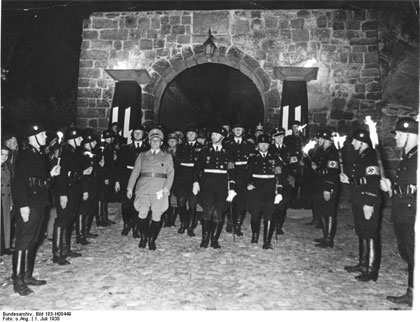 Nazi ceremonies in Quedlinburg.Bundesarchiv
Nazi ceremonies in Quedlinburg.Bundesarchiv
The story of the lodge goes back to the Holy Roman Empire to the time of the first German king Henry the Fowler in the early 10th century.
SS chief Heinrich Himmler was fascinated by the old king and believed that he was in fact his reincarnation.
The Nazis used Henry’s legacy to legitimise their own power, and they held ritual ceremonies at the site of his tomb in Quedlinburg monastery on the anniversary of his death. Quedlinburg has been described as Heinrich Himmler’s Camelot.
In the 1930s, it formed an uncomfortable alliance with Hitler under which they became part of the cultural elite in the Third Reich.
Quedlinburg members found themselves in top positions in many Nazi-era institutions, most notably the SS.
 The diary written by a high-ranking SS officer using the pseudonym Michaelis is said to identify the location of 11 sites in the Lower Silesia and Opole regions with caches of gold, stolen art, bank deposits, valuables and religious artefacts.Silesian Bridge Foundation
The diary written by a high-ranking SS officer using the pseudonym Michaelis is said to identify the location of 11 sites in the Lower Silesia and Opole regions with caches of gold, stolen art, bank deposits, valuables and religious artefacts.Silesian Bridge Foundation
Furmaniak said that despite this, most of the attempts on Hitler’s life involved members of the secretive group and that it had handed over the documents as a gesture of atonement for Poland’s suffering at the hands of Germany during World War Two.
In a statement, the foundation said: “The return of world heritage is seen as a milestone on the long path of reconciliation.
“The recovery of lost works of art and their return to their rightful owners could become a catalyst for changes aimed to bring unity – not polarization. This notion guides our mission.”
Furmaniak added: “We are preparing to explore another location, which we will start to explore at the same time or just after Minkowskie.
“We have all the required permits for carrying out this work. We are cooperating all the time with the Ministry of Culture and the heritage conservator.”











